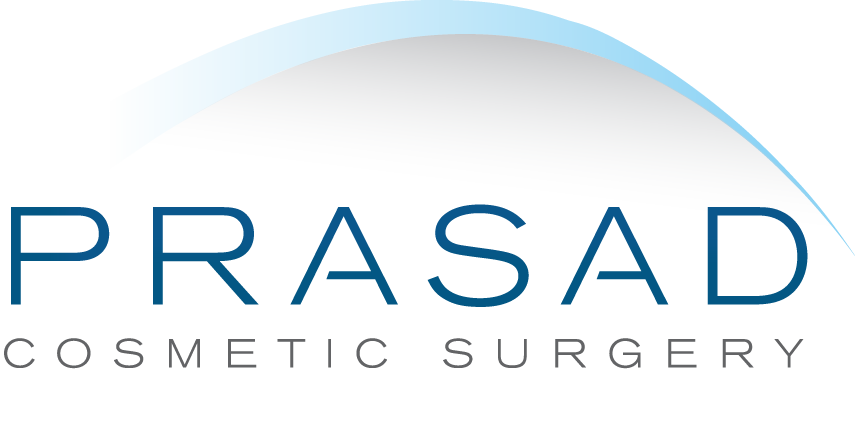Under Eye Fat Transfer: Possible Complications, and a Safer Alternative
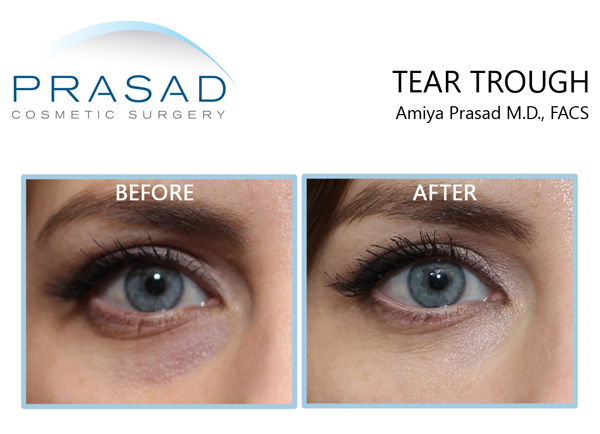
Many people struggling with hollowness under the eyes consider fat grafting after researching online.They prefer fat because it is natural, and lasts longer than cosmetic fillers. Fat grafting can help with volume correction areas where the skin is thick, for example I have had good results with fat grafting for hand rejuvenation. Unfortunately, it can be problematic in the thin skin under the eyes, which is the thinnest in the body.
I’ve observed that many general plastic surgeons offer fat grafting under the eyes. I’ll talk about the benefits and drawbacks of under eye fat transfer, drawing on my experience caring for patients who had complications like irregularities from variable healing, inflammation, and scarring.
What Is Fat Grafting?
Fat grafting involves removing fat from one part of the body—usually the abdomen—using liposuction, then transplanting it to another area. For the fat to survive, it must develop a new blood supply in the transplant area.
Fat cannot survive without adequate blood flow. When this fails to occur, the fat breaks down, leading to inflammation and scar tissue formation.
Why Fat Seems Like a Logical Choice
It’s easy to understand why people prefer using their own fat to treat under eye hollowness. They often reason that since the hollow appearance is caused by fat loss, it makes sense to replace that fat. They may also believe that since fat comes from their own body, it will be more readily accepted and less likely to cause adverse reactions.
However, once you understand how fat behaves after grafting, you’ll see that it often doesn’t perform the way you expect—especially in the under eye area.
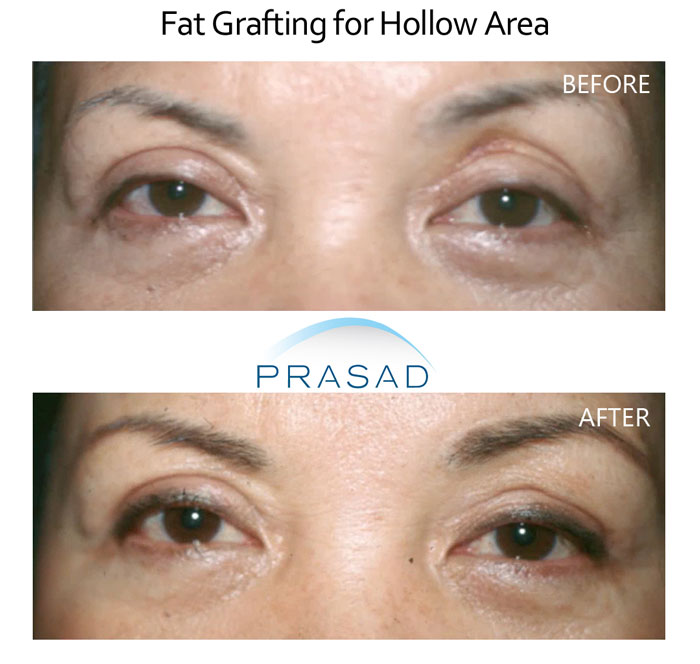
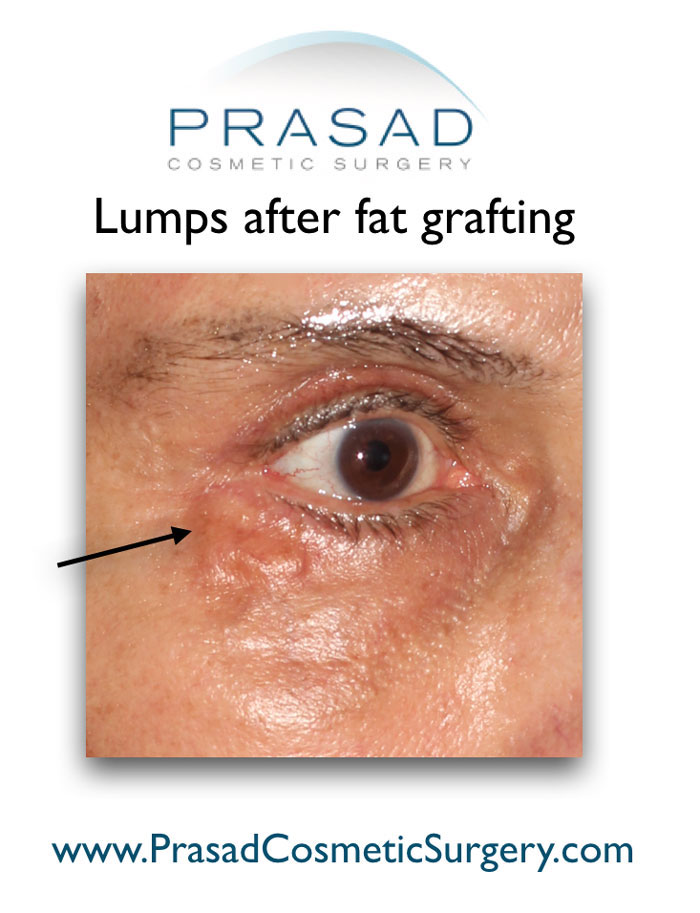
What are the complications of fat transfer under eyes?
In my practice, I’ve seen patients with lumpy, uneven contours due to fat surviving only partially and settling at different levels under the eye. These irregularities work against the goal of creating smooth volume in hollow areas under the eyes.
Some patients who had fat grafting done elsewhere were disappointed that none of it stayed. I tell them that they are actually fortunate because no additional surgical correction is required.
As a cosmetic eyelid surgery specialist, I am frequently contacted by patients to surgically remove fat grafts under the eyes. Removing grafted fat under the eyes is a highly specialized procedure that may necessitate multiple revision surgeries.
Due to the degree of compromise in the delicate integrity of the lower eyelid anatomic support, there are times when I need to restore tissue quality using regenerative medicine such as the application of PRP (platelet-rich plasma) and stem cell based wound healing technology such as extracellular matrix before performing corrective surgery.
What's Recovery Like After Under Eye Fat Transfer?
Recovery involves healing not just at the site where fat was placed, but also where it was harvested—commonly the abdomen. While abdominal healing is generally straightforward, swelling under the eyes can last for weeks or even months. In some cases, I’ve seen chronic swelling from lymphatic damage persist for years after fat grafting.
Another misconception is that fat is safer than filler because it’s from the patient’s own body. However, hyaluronic acid fillers, like Restylane and Juvederm, are made from substances naturally found in the body and have a very low risk of allergic reaction. We routinely use these without skin testing. Additionally, the body safely metabolizes the fillers over time and can be easily reversed with hyaluronidase if needed.
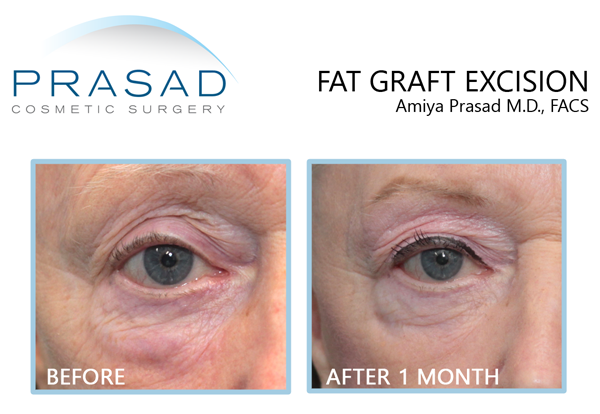

A Safer Option: Hyaluronic Acid Fillers
For under eye hollowness, I prefer using hyaluronic acid fillers such as Restylane or Juvederm. These fillers are soft, flexible, and ideal for delicate under eye skin.
To minimize bruising, I use blunt cannulas instead of needles, which reduces the risk of hitting blood vessels. The procedure is quick, non-surgical, and usually completed in minutes.
As an oculofacial plastic surgeon, my detailed understanding of facial anatomy helps ensure the filler is placed in a way that enhances the natural contours of the face.
In cases where volume loss extends to the cheek area—known as the eyelid-cheek junction—I often add filler to the cheeks for better support and an overall more balanced appearance.
Recovery After Fillers
Most patients experience little to no downtime after filler placement. Mild swelling or bruising may occur due to the local anesthetic, but usually resolves within a few days. If needed, the filler can be dissolved with hyaluronidase, offering an added layer of safety.
I always schedule a follow-up two weeks later to assess how the filler has settled and make any adjustments if necessary. Under eye fillers typically last up to one year before being naturally absorbed by the body.
Under Eye Fat Transfer vs. Fillers: My Recommendation
In my opinion, fat grafting under the eyes is too unpredictable and carries a higher risk of complications. That’s why I recommend hyaluronic acid fillers for under eye hollowness—they offer:
- Greater precision
- Less risk
- Faster recovery
- Reversibility if needed
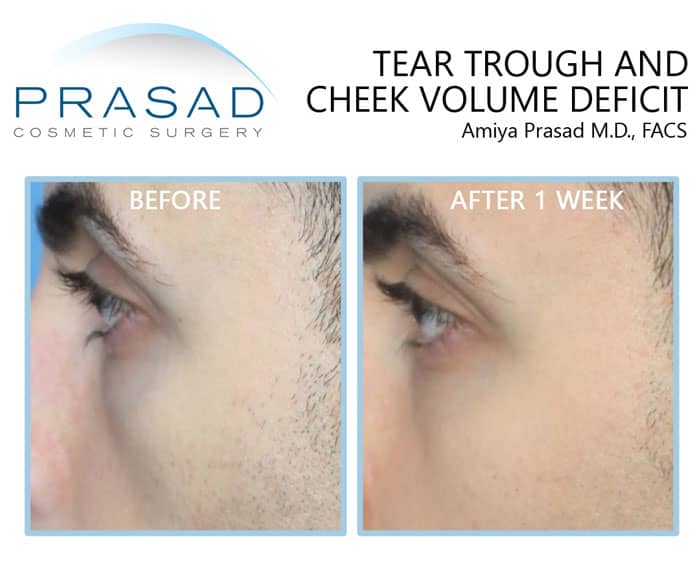
Under Eye Filler Treatment in Manhattan NYC and Garden City, Long Island
Dr. Amiya Prasad is a Diplomate of the American Board of Cosmetic Surgery and a Fellowship-trained oculofacial plastic and reconstructive surgeon. He’s been in practice in Manhattan, New York City and Garden City, Long Island, New York for over 25 years.
If you’re interested in recommendations for your individual situation, you may call any of our offices at (212) 265-8877 in Manhattan, New York City; (516) 742-4636 in Garden City, Long Island; or (703) 356-1336 in Vienna, Virginia, or fill up the form below to schedule an appointment.
